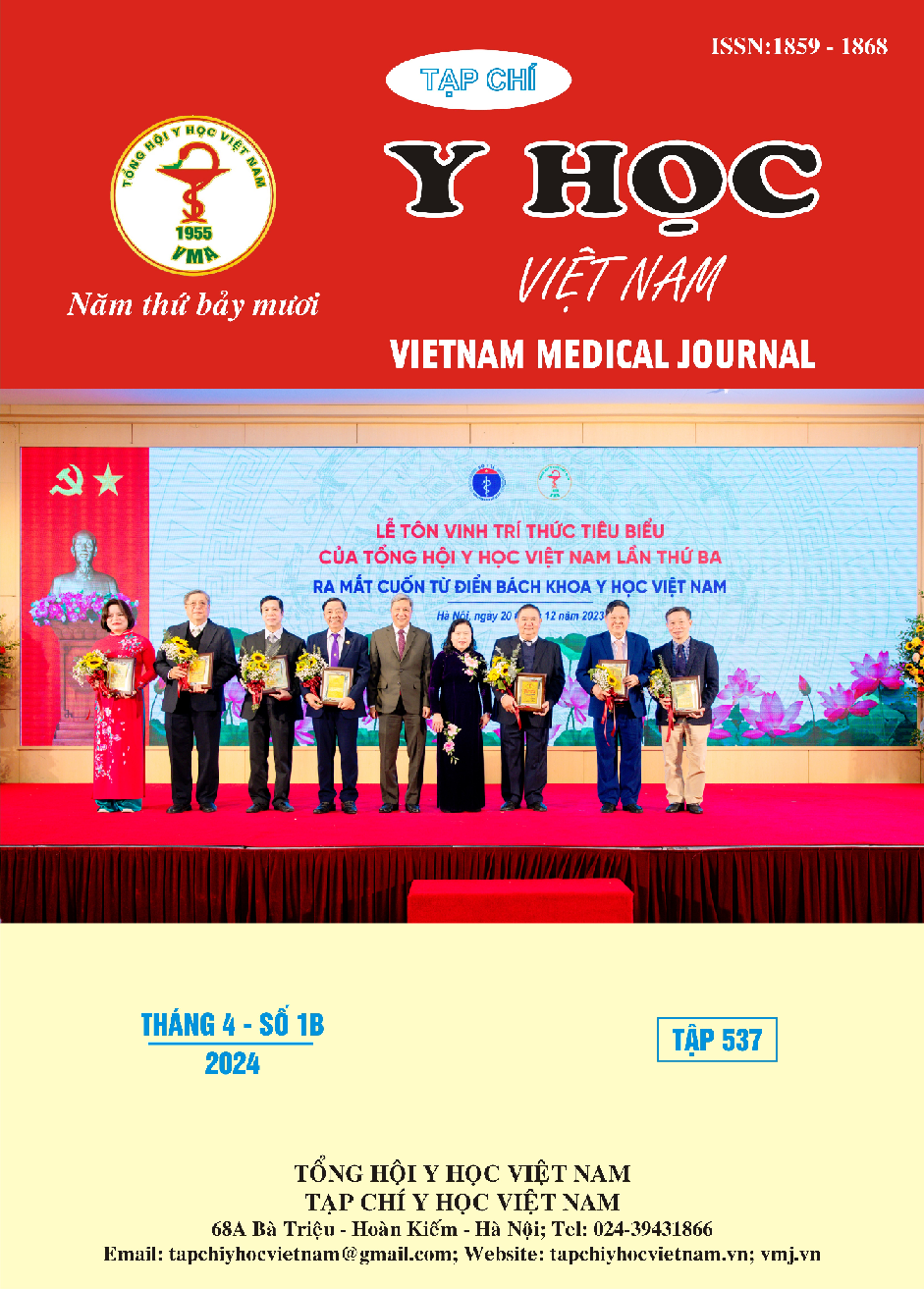KẾT QUẢ SỚM PHẪU THUẬT BẮC CẦU MẠCH VÀNH ÍT XÂM LẤN (MICS CABG) TẠI VIỆN TIM TP. HỒ CHÍ MINH
Nội dung chính của bài viết
Tóm tắt
Đặt vấn đề: Phẫu thuật bắc cầu mạch vành ít xâm lấn (MICS CABG) là phương pháp phẫu thuật mạch vành mới có nhiều ưu điểm. Mục tiêu của phương pháp này là giảm mức độ xâm lấn của phẫu thuật mà vẫn duy trì được những ưu điểm của phẫu thuật bắc cầu mạch vành kinh điển. Chúng tôi báo cáo kết quả sớm bước đầu triển khai phương pháp phẫu thuật bắc cầu mạch vành ít xâm lấn tại Viện Tim Thành phố Hồ Chí Minh. Đối tượng và phương pháp nghiên cứu: Nghiên cứu mô tả hàng loạt ca, thời gian từ tháng 7/2023 đến tháng 9/2023, có 20 trường hợp được phẫu thuật bắc cầu mạch vành với đường mở ngực nhỏ bên trái. Kết quả: Toàn bộ 20 trường hợp được phẫu thuật bắc cầu mạch vành ít xâm lấn không sử dụng máy tim phổi nhân tạo (Off-pump MICs CABG). Độ tuổi trung bình 61,06 ± 9,90 tuổi, số lượng bệnh nhân nam/nữ là 16/4. Tất cả trường hợp phẫu thuật được thực hiện cầu nối động mạch ngực trong trái – động mạch liên thất trước. Tĩnh mạch hiển lớn được sử dụng trong các trường hợp cần thực hiện cầu nối thứ 2 hoặc 3. Độ dài đường mổ trung bình 6,8 ± 1,3 cm. Số cầu thực hiện ít nhất là 1 cầu, nhiều nhất là 3 cầu. Thời gian phẫu thuật trung bình 134,5 ± 44,57 phút. Thời gian nằm viện trung bình 5,5 ± 2,19 ngày. Kết luận: Phẫu thuật bắc cầu mạch vành ít xâm lấn (MICs CABG) là phương pháp phẫu thuật có nhiều ưu điểm về kỹ thuật cũng như tiên lượng hậu phẫu.
Chi tiết bài viết
Từ khóa
phẫu thuật bắc cầu mạch vành ít xâm lấn, MICS CABG, Off-pump
Tài liệu tham khảo
2. Fihn SD, Gardin JM, Abrams J, Berra K, Blankenship JC, Dallas AP, et al. 2012 ACCF/AHA/ACP/AATS/PCNA/SCAI/STS guideline for the diagnosis and management of patients with stable ischemic heart disease: executive summary: a report of the American College of Cardiology Foundation/American Heart Association task force on practice guidelines, and the American College of Physicians, American Association for Thoracic Surgery, Preventive Cardiovascular Nurses Association, Society for Cardiovascular Angiography and Interventions, and Society of Thoracic Surgeons. Circulation. 2012;126(25):3097-137.
3. Lapierre H, Chan V, Ruel M. Off-pump coronary surgery through mini-incisions: is it reasonable? Curr Opin Cardiol. 2006;21(6):578-83.
4. McGinn JT, Jr., Usman S, Lapierre H, Pothula VR, Mesana TG, Ruel M. Minimally invasive coronary artery bypass grafting: dual-center experience in 450 consecutive patients. Circulation. 2009;120(11 Suppl):S78-84.
5. Neumann FJ, Sousa-Uva M, Ahlsson A, Alfonso F, Banning AP, Benedetto U, et al. [2018 ESC/EACTS Guidelines on myocardial revascularization. The Task Force on myocardial revascularization of the European Society of Cardiology (ESC) and European Association for Cardio-Thoracic Surgery (EACTS)]. G Ital Cardiol (Rome). 2019;20(7-8 Suppl 1):1S-61S.
6. Rodriguez M, Ruel M. Minimally Invasive Multivessel Coronary Surgery and Hybrid Coronary Revascularization: Can We Routinely Achieve Less Invasive Coronary Surgery? Methodist Debakey Cardiovasc J. 2016;12(1):14-9.
7. Ruel M, Shariff MA, Lapierre H, Goyal N, Dennie C, Sadel SM, et al. Results of the Minimally Invasive Coronary Artery Bypass Grafting Angiographic Patency Study. J Thorac Cardiovasc Surg. 2014;147(1):203-8.


